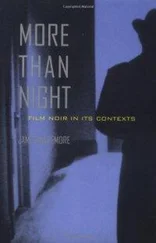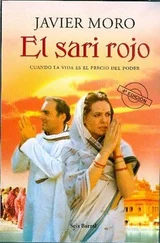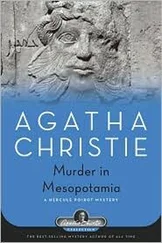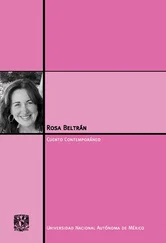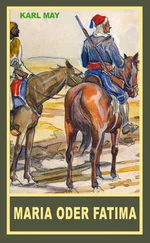4 Chapter 4Figure 4.1. Actress Gloria Swanson in a publicity shot for the...Figure 4.2. Motion picture poster for the film Cabiria (1914)..
5 Chapter 5Figure 5.1. The Seven-headed animal from Metropolis (1927).Figure 5.2. The underground world of The Mole People (1956)...
6 Chapter 6Figure 6.1. Gate of Ishtar reconstructed at the Pergamonmuseum, Berlin. Figure 6.2. The Babylonian court of Intolerance (1916). Public domain.Figure 6.3. Poster for Noah’s Ark (1928). Public domain.
7 Chapter 7Figure 7.1. Le Festin de Balthazar, a film by Louis Feuillade..Figure 7.2. Assyrian banquet relief.Figure 7.3. David W. Griffith near Ishtar’s statue.
8 Chapter 8Figure 8.1. Blanche Sweet as Judith in Judith of Bethulia...Figure 8.2. Yvonne Furneaux as the Assyrian queen in Io Semiramide (1963).Figure 8.3. Scene from Intolerance (1916). Public domain.
1 Cover
2 Title page Reception of Mesopotamia on Film Maria de Fátima Rosa NOVA University LisbonLisbon, Portugal
3 Copyright
4 Dedication
5 Table of Contents
6 List of Abbreviations
7 Acknowledgements
8 Begin Reading
9 Bibliography
10 Index
11 End User License Agreement
1 i
2 ii
3 iii
4 iv
5 v
6 vi
7 vii
8 viii
9 ix
10 x
11 1
12 2
13 3
14 4
15 5
16 6
17 7
18 8
19 9
20 10
21 11
22 12
23 13
24 14
25 15
26 16
27 17
28 18
29 19
30 20
31 21
32 22
33 23
34 24
35 25
36 26
37 27
38 28
39 29
40 30
41 31
42 32
43 33
44 34
45 35
46 36
47 37
48 38
49 39
50 40
51 41
52 42
53 43
54 44
55 45
56 46
57 47
58 48
59 49
60 50
61 51
62 52
63 53
64 54
65 55
66 56
67 57
68 58
69 59
70 60
71 61
72 62
73 63
74 64
75 65
76 66
77 67
78 68
79 69
80 70
81 71
82 72
83 73
84 74
85 75
86 76
87 77
88 78
89 79
90 80
91 81
92 82
93 83
94 84
95 85
96 86
97 87
98 88
99 89
100 90
101 91
102 92
103 93
104 94
105 95
106 96
107 97
108 98
109 99
110 100
111 101
112 102
113 103
114 104
115 105
116 106
117 107
118 108
119 109
120 110
121 111
122 112
123 113
124 114
125 115
126 116
127 117
128 118
129 119
130 120
131 121
132 122
133 123
134 124
135 125
136 126
137 127
138 128
139 129
140 130
141 131
142 132
143 133
144 134
145 135
146 136
147 137
148 138
149 139
150 140
151 141
152 142
153 143
154 144
155 145
156 146
157 147
158 148
159 149
160 150
161 151
162 152
163 153
164 154
165 155
166 156
167 157
168 158
169 159
170 160
171 161
172 162
173 163
174 164
175 165
176 166
177 167
178 168
179 169
180 170
181 171
182 172
183 173
184 174
185 175
186 176
187 177
188 178
189 179
190 180
191 181
192 182
193 183
194 184
195 185
196 186
197 187
198 188
199 189
200 190
201 191
202 192
203 193
204 194
205 195
206 196
207 197
208 198
209 199
210 200
211 201
212 202
213 203
214 204
215 205
216 206
217 207
218 208
219 209
220 210
221 211
222 212
223 213
224 214
225 215
226 216
227 217
228 218
229 219
230 220
231 221
232 222
233 223
234 224
235 225
236 226
237 227
238 228
239 229
240 230
This book was carried out during 2020 and took shape while developing my postdoctoral project on Reception of Mesopotamian Antiquity at CHAM – Centre for the Humanities of NOVA School of Social Sciences and Humanities where I was awarded a grant (FCSH/CHAM/HIS/04666/1 BPD) through the strategic project sponsored by FCT (UID/HIS/04666/2013 and UID/HIS/04666/2019).
I am grateful for the support I received from colleagues who contributed with helpful ideas, providing advice, and above all by reviewing drafts of paragraphs or entire chapters. In particular, my gratitude goes to Isabel Gomes de Almeida for reading and commenting on the manuscript and to Carla Alferes Pinto for reviewing parts of the book. My thanks also go to Wiley’s editors Todd Green for the enthusiasm with which he welcomed the idea and Andrew Milton for his help and patience in answering all my questions. I would also like to thank Inês Pinto Coelho, Cristina Brito, Professors João Paulo Oliveira e Costa, Helena Trindade Lopes and specially Professor Francisco Caramelo, who encouraged the writing of this book from the start and conveyed me the fascination for ancient Mesopotamia.
For all the information and the stills provided, thanks are also due to several institutions: Cinemateca Portuguesa – Museu do Cinema, Deutsche Kinemathek - Museum für Film und Fernsehen, Gaumont-Pathé Archives, The Museum of Modern Art, The Friedrich Wilhelm Murnau Foundation, WSM Art Metropolis in the person of Bertina Schulze-Mittendorff.
To my family, above all, I owe a debt of gratitude for all the support and encouragement. My last words go to my dearest niece, Mafalda, who has given me the motivation when I needed the most.
Introduction: Reception of Mesopotamia and the Cinema Lens
0.1 Reception Studies and Cinema
Studies on Reception of antiquity are relatively recent. Charles Martindale first included Reception Theory in the field of Classical Studies in 1993 with Redeeming the Text: Latin poetry and the hermeneutics of reception . The Professor of Latin from the University of Bristol was inspired by the research line inaugurated by the Constance School, with scholars such as Wolfgang Iser and especially Hans Robert Jauss, who, in the 1960s, boosted the field named Aesthetic of Reception. Jauss postulated that the observer of a work of art should be given an active role. In broad terms, he considered that the work of art was not a static or timeless phenomenon. 1In his own words, “A literary work is not an object that stands by itself and that offers the same view to each reader in each period. It is not a monument that monologically reveals its timeless essence. It is much more like an orchestration that strikes ever new resonances among its readers and that frees the text from the material of the words and brings it to a contemporary existence.” 2Martindale thus resorted to this seminal work to introduce new conceptions in the study of the Classics, claiming, like Jauss before him, that an author has no control over his work since it does not have an immutable meaning, always depending on the interpretations made about it and hence subjected to the cognitive role of the observer/reader, the “ active principle.” 3
To Martindale, the fact that reception presupposes the active participation of the reader, being himself an essential part in the relationship between present and the past and its prolific dialogue, 4differentiates it from other sorts of analyses. Indeed, reception contrasts with other concepts that can also be applied to the study of the past, although with different meanings and uses, that is: “tradition” and “appropriation.” If, in the first case, we speak of an almost passive acceptance of a legacy from the past, in the second we are perhaps faced with a rupture of dialogue, an apprehension that makes it almost impossible to shape and modify the reader’s sensitivity. Considering the involvement of the reader, reception therefore presents itself as a basis for the study and interpretation of the reason to why there is not a single reading for history. 5In fact, we must remind ourselves that neither the culture produced by past civilizations is dead nor its influence on the present is linear. 6One should not, therefore, succumb to the illusion of considering antiquity as stationary, since as an object of analysis it changes throughout time, from one generation to the other, and from researcher to researcher. 7In other words, Martindale assumes that the same historical vehicle, the same text , 8can be interpreted in different ways depending on the agent and on the time of that interpretation. Naturally, history, as much as it wants to find unique and stagnant readings, depends, in large part, on its observer, on its reader, and on the way his present contemplates that past . Jauss inclusively reminded us in his opus of the words of R.G. Collingwood, who “postulate, posed in his critique of the prevailing ideology of objectivity in history – History is nothing but the reenactment of past thought in the historian’s mind.” 9
Читать дальше


